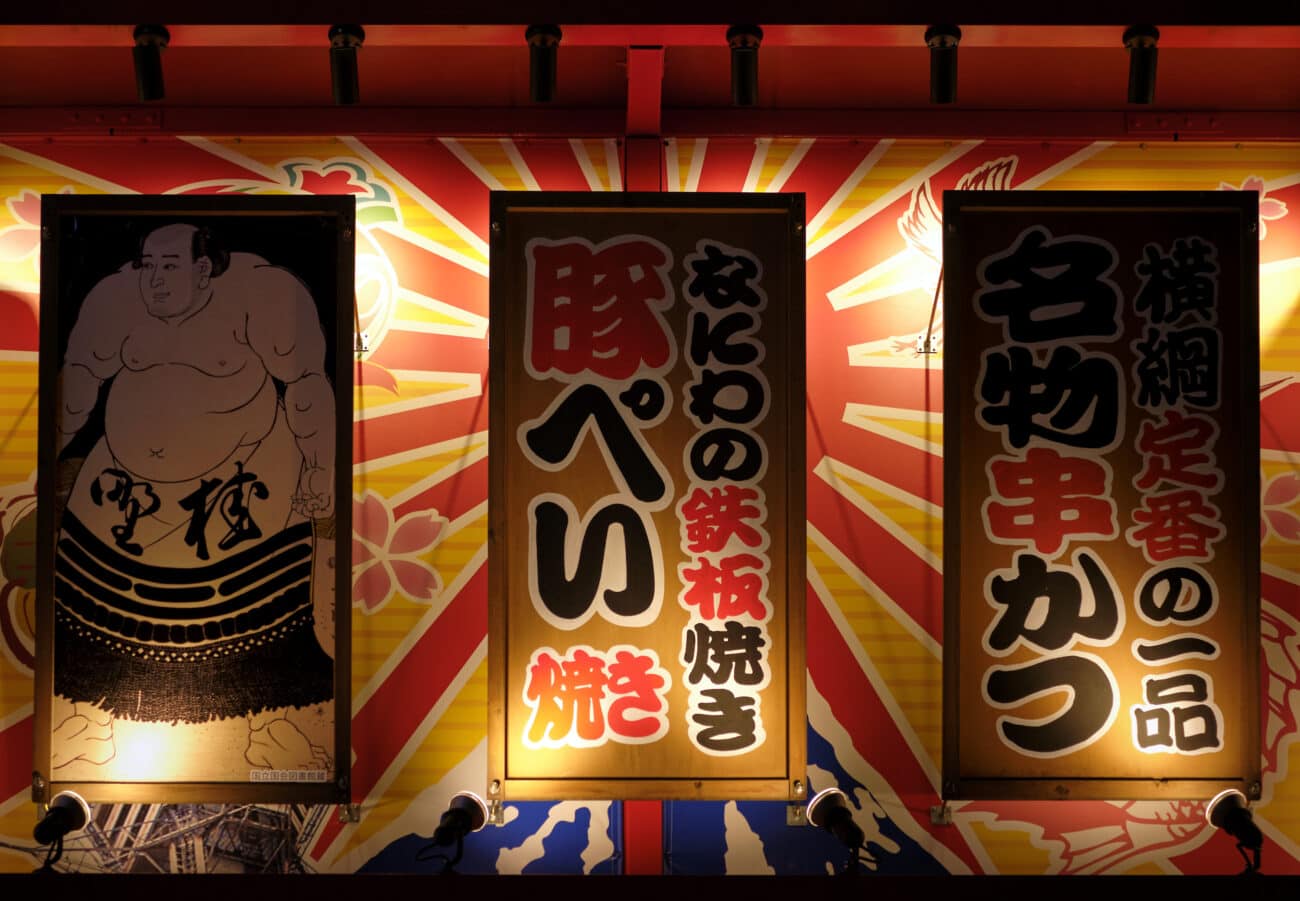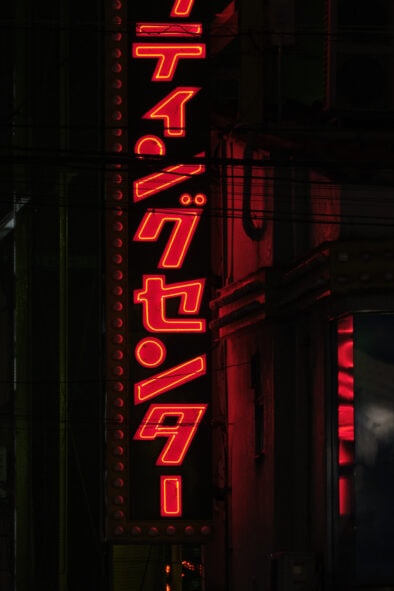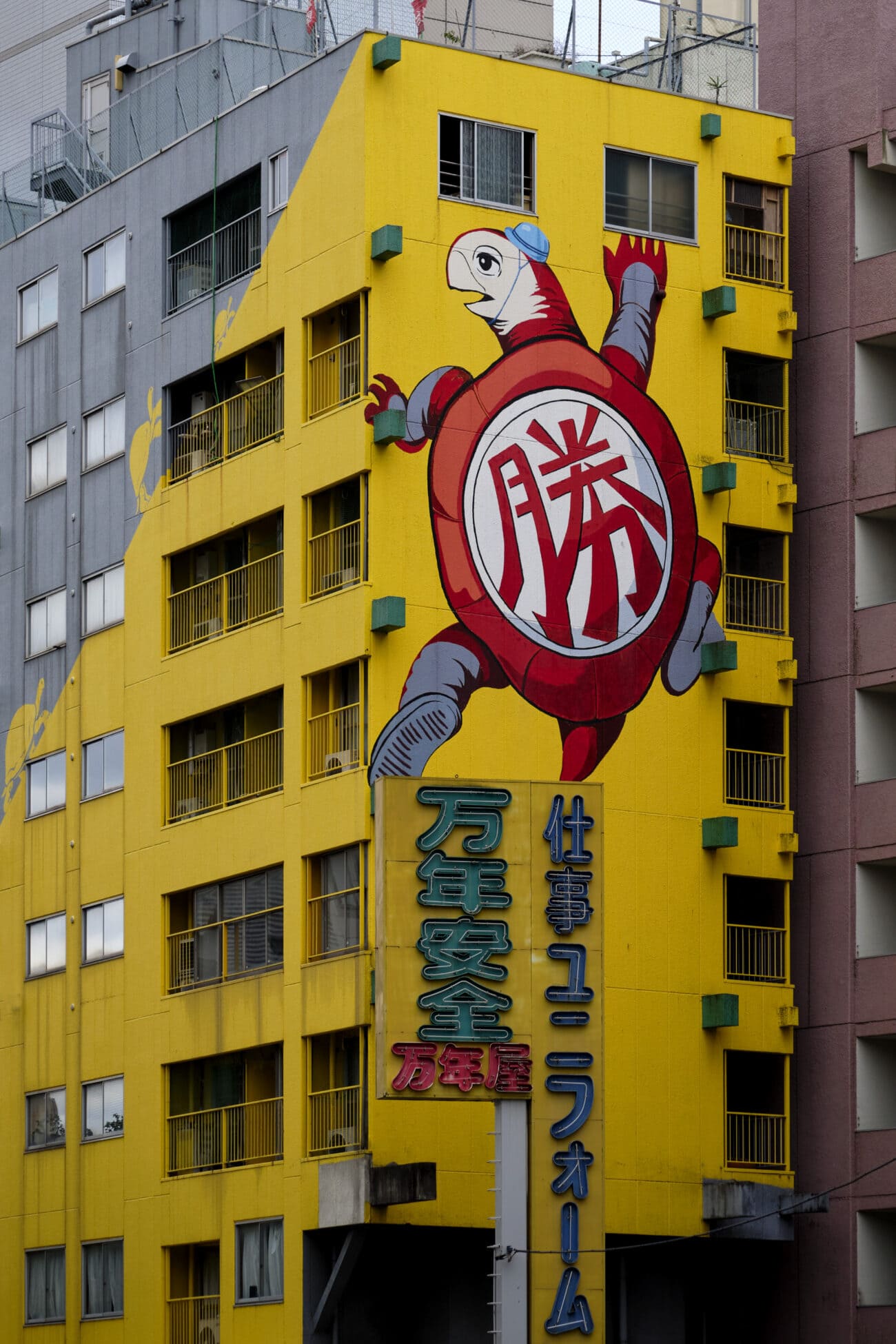DANGEROUS DAYS
D-Days (V) Culture/Commerce
PREDICTIONS FROM "BLADE RUNNER" 1982
A STATUS QUO REPORT
Dangerous Days part 05 focuses on the cultural and commercial ties our societies are entangled in and the effects of advertising practices, the individual is exposed to in today’s world and cities in particular. So-called “OOH (Out of home)” ads are of special interest as they have to be consumed to their full extent and involuntarily, offering no option to escape. OOH ads include anything from gigantic, large scale digital screens or neon signs covering whole buildings, to wall murals, sculptures, billboards, uni-poles, public transportation and infrastructure ads, video monitors and brightly lit updates to the classic advertising pillar (the “Litfaßsäule”), signs and display windows as well as the printed poster in all its formats.
Special thanks and much love to Korean-American producer Jamaica Suk, who turned out the marvelous “Commerce-Mix”, a truly dark and thriving force which takes you for a ride. Built on my audio filed recordings.
Part One | World/Off-World Part Two | Man/Machine Part Three | Structure/Network Part Four | Architecture/Space Part Six | Outlook/Future

One of the more memorable visuals from the original 1982 motion picture is the enormous Outdoor Digital Billboard displaying a Japanese Geisha. This visual loops through footage of her swallowing a pill, advertising birth control to a mass audience. While the advert itself is considered to be a parody of an existing Japanese product (Strong Wakamoto), one thing is evident and that’s the precision with which our advertising reality has been envisioned. Not surprising considering Ridley Scott came from an advertising background but remarkable nevertheless! In principle though the purpose and function of billboard ads hasn’t changed since the first 24-sheet board was erected at the Paris Exposition in 1889. Simply put, it remains a format with high visual impact that can’t be turned off or avoided, providing maximum reach to a huge number of spectators.
Significant cultural differences become apparent once you first set foot in a Japanese city where you’re bombarded by the brightest of lights and impressed by the strongest of billboard structures, uni-poles and a flood of posters galore, leaving you amazed about the sheer volume and intensity of it all. It’s unlike anything you’d find in the West. It’s an onslaught on the senses. Entire buildings are covered with a myriad of signs, and yet in all this overwhelming clutter it becomes clear that other culturally rooted ad strategies, audience perceptions and aesthetics are at work. As a graphics person and photographer who has a thing for signs, the first thought that popped was “how do you fit that much sign onto a single building?” A puzzle which solved itself quickly. It’s the vertical orientation of traditional Japanese writing, allowing a building owner to take full advantage of the vertical axis and facade real-estate. On top of that the Western, mostly English alphabet, co-exists alongside the Japanese ones of which there are three. As a result literally every square inch is utilized. But what can’t be deciphered, is not understood and a frequent issue for most visitors and tourists. I on the other hand love the saturation and mix of styles, designs, typefaces, languages and epochs. It’s enjoyable to look at signs and billboards which I can’t read or understand yet.
Sooner or later I’ll find out anyway, having the power of the global nervous system right in my pocket. Setting a step back to halt for a moment and take in this new sensation, I thought about how we got here in the first place. The westernization of Japan began during the Meiji era (1868 – 1912) and saw a rapid development in printing tech and the media. The appearance of newspapers and magazines propelled the outset of advertising agencies and campaigns. During this time the country underwent a dramatic transformation and western culture was prevalent everywhere and brought about western styles and ways of life. This is still happening today but now works both ways. Proof and traces of this ongoing East-West affair can still be found and show how some practices merged and developed and others did not. It’s the presence of those materialized witnesses from the past, mingling with the contemporary and the new throughout today’s cityscapes, which I find to be so immensely valuable and interesting. Some old, worn-out signs are merely still around because the owning company vanished and no-one wants to pay for the removal. Yet others are cherished and maintained despite their horrific maintenance cost because there is much more to it than just the nostalgic value. Undoubtedly the light and colors which classic neon radiates and the feelings they cause, are very particular and appreciated by many.
Today the decay and systematic deconstruction of these unique objects can be witnessed everywhere. Some hold against this development with pioneering ideas, such as the Buchstabenmuseum in Berlin or the Neon Museum in Vegas, collecting and exhibiting their rare and priceless findings. Look at Hong-Kong which was until just recently known as the neon capital of the world. Light-emitting diodes (LED) have been taking over and quite frankly, the takeover has so far not been pretty. New technologies such as the 12V replacement tubes, capable of emitting a glow equal to their high voltage predecessors are very promising and could save the neon aesthetics. “LED Neon” which is not my thing, has been given a chance but remains a topic of frequent and heated discussions. Mostly lopsided they are, forgetting the other essential ingredient every great sign requires: Quality content as well as design. Advancing in time does not equal advancing in design and style. Eras have varying goals which of course contribute to the outcome. If transiency, cost and an aggressive and fast target group approach are the primary goals, others will have to make way. A neon-classic which crowned a skyline for decades and was perceived as a symbol of stability and trust and even became part of a neighborhood’s identity, can now suddenly turn into a “lightmare” (as I like to call it), harassing the bypassing and locals every split second they catch a glimpse of the new, loud, erratic and extremely bright screens.
The current global “trend” of increased levels of aggression infiltrating all aspects of life is besides politics, also particularly evident in advertising. It’s not about convincing anymore, it’s about threatening and causing fear. We are now entering the era of “DOOH (digital out of home)” advertising and whether that’s a step up or not, is for you to decide. Though still just a “sign of our times”, these new and highly advanced devices and screens incorporate digital on a level you are familiar with already: personalized content. So what the digital nature of DOOH media means for you in particular, is that its output exists only in the “here and now” and is not orchestrated beforehand but feeds off data, big data that is. By merging it with social media and, by linking it live with various types of personal devices on location, DOOH aims at creating an experience which is tailored just for you and appears only when you are present. This is far scarier than your average browser ad which you can easily get rid of. The rapid changes of our time in which culture drives consumption, lead to conflicts between cultural traditions and new ways of life and business practices. Career advancers, often single, spend more time in the office and travel a lot, having less time for themselves and/or their families. It’s the lack of time which changes everything from eating habits to family orientation, the way of communicating, to consumer behavior and advertising practices.
In many international markets, foreign influences, industrialization and massive urbanization attempts are turning even ancient traditions upside down. Words like free time and vacation are used sparsely in the land of the rising sun. The Japanese work very long hours and that constantly. There can be no question: culture is and remains a decisive factor of consumer and human behaviour in general. Beyond the flurry of billboards, posters and other forms of outdoor advertising with the images of Japanese celebrities and visuals rooted in Japan’s historical and cultural heritage (from women dressed in kimonos to theatrical scenes), one thing is rather striking: the influence of manga and anime on outdoor advertising. Japanese black and white comics (Manga) and Japanese animation (Anime) are very popular and have succeeded in winning over audiences of all ages throughout the world. Today even France and the US have strong fan bases. Many of us raised in the 1980s and 1990s watched dubbed anime series on TV, probably not realizing they were originally Japanese. No wonder that the distinctive illustration and animation style is very prominent in Japanese advertising. Looking at the history helps to get a grip on the topic and understand the fascination with the style.
Manga means ‘random pictures’ and the word was first used in the 19th century by a famous ukiyo-e artist (ukiyo-e are mass produced Japanese woodblock prints – 17th – 20th century). Storytelling illustrations were not novel in Japan. In fact ‘gi-ga’ (funny pictures) from the 12th century featured many manga traits already. The manga we know today emerged after WWII and is essentially the merger of ukiyo-e and western art. As there are practically no laws that limit what can appear in a manga, artists have total freedom. This is why manga can be very sexual, violent and can delve into any topic. While this is often the case, most Manga explores philosophical and existentialist questions and center on very real issues or just provide plain entertainment. Akihabara is a neighborhood in Tokyo, known to be the Manga, Anime and video game hot spot par excellence. Japan undoubtedly pioneered and led the video and computer gaming industry and development. It evolved when Manga and Anime techniques met with the sudden possibilities the newly established computer and electronics industry would provide. From Space Invaders, Donkey Kong, Pac-Man, Super-Mario and Final Fantasy to Legend of Zelda and Resident Evil, it was the Nintendo, Sega and Konami companies who set the ground rules.
As someone who is drawn to bright city lights like a moth, I wish for a brilliantly lit future indeed, but one that has regard for certain principles which should be common sense and which should operate within a sustainable “consumption framework”, since the current framework is a direct path to termination. It’s neither the act of trade, including all the steps required to exchange goods and services (dating back to our earliest days), nor is it the act of advertising a product which is malfunctioning. It’s the kind of products and services, the involved manufacturing processes and the methods of buying, selling, and advertising which matter. Low quality, cheaply produced, yet high priced products, slave workers enabling the disproportionately wealthy, shitty ads and idiot idols seen as respected leaders, equal a constant attack on anyone who believes in reason and progress, causing aggression on the consumption end, and even anxiety because escape is impossible. That’s where fair-trade enters the frame. And rip-off is a term which has gained momentum. More on this topic in the upcoming and final part “Outlook/Future”.
Part One | World/Off-World Part Two | Man/Machine Part Three | Structure/Network Part Four | Architecture/Space Part Six | Outlook/Future
CREDITS
Dangerous Days 05 | Commerce-Mix by Jamaica Suk, Berlin (KR/US)
Text, photos, audio field-recordings: Oliver Lins, Berlin (AT)
Thank you for your support.
© All rights reserved
OLEX – Oliver Lins

















































































































































